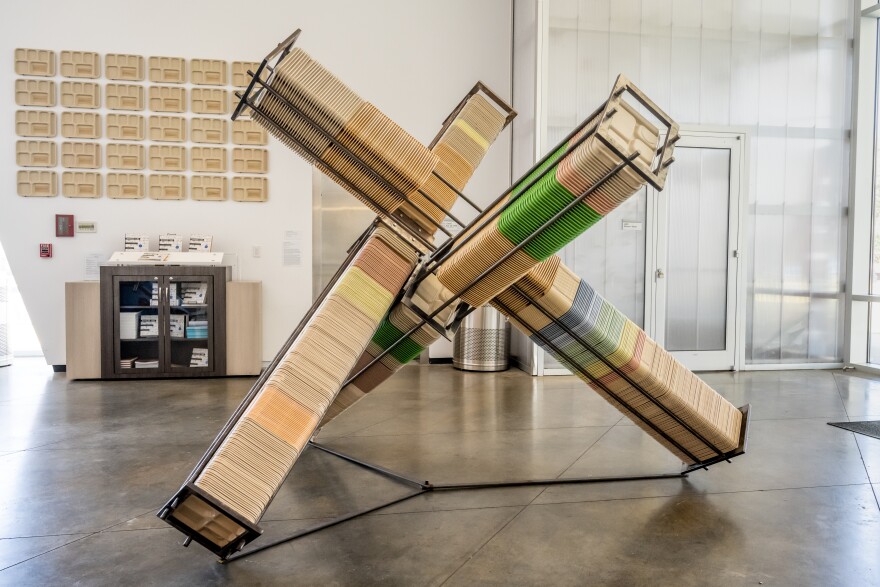A new exhibit at the Freedom Center features a range of art so small it's painted on leaves to a large focal half-ton sculpture. All of it is made by incarcerated people or those impacted by the prison system.
Ohio native and New York University professor Nicole Fleetwood created the exhibit after watching family and neighbors in Hamilton, Ohio, get sentenced to decades in prison. While visiting them, she noticed art made by incarcerated people on the walls. Her interest in it fueled her book and the exhibit, "Marking Time: Art in the Age of Mass Incarceration."
"Everything about prisons is horrible, and everything about human capacity to live, to create, to create a better society, to me is wondrous," she said. "And so the book and exhibition has that tension — the tension of being in something as horrifying as a six-foot by nine-foot cell for many years. But also actively engaging with one's creativity to express freedom, to express possibility, to express transformation. And so artists really innovate with the very limited resources available to them."
For instance, Dean Gillispie used trash and other objects he found in prison to create minutes of Americana. He was incarcerated for 20 years for a crime he did not commit and released after advocacy from his family and the Ohio Innocence Project.

Fleetwood says exposing the art to the public can help people understand the "expansive reach and devastation that prisons have caused on American society."
More than half of all Americans are impacted by the prison system. According to the Prison Policy Initiative, nearly two million people are in state or federal prison, local jail, correctional facilities, detention facilities, or other kinds of incarceration.
Fleetwood said she hopes the exhibit can leave people with a twofold experience. First, she wants people to be in awe of the level of talent in the work.
"But, they also leave with an urgency to end prisons as we know them to be," she said.
The exhibit opens Friday and runs until Aug. 9 at the Freedom Center. For more information about the exhibit, visit the website, Marking Time: Art in the Age of Mass Incarceration.



